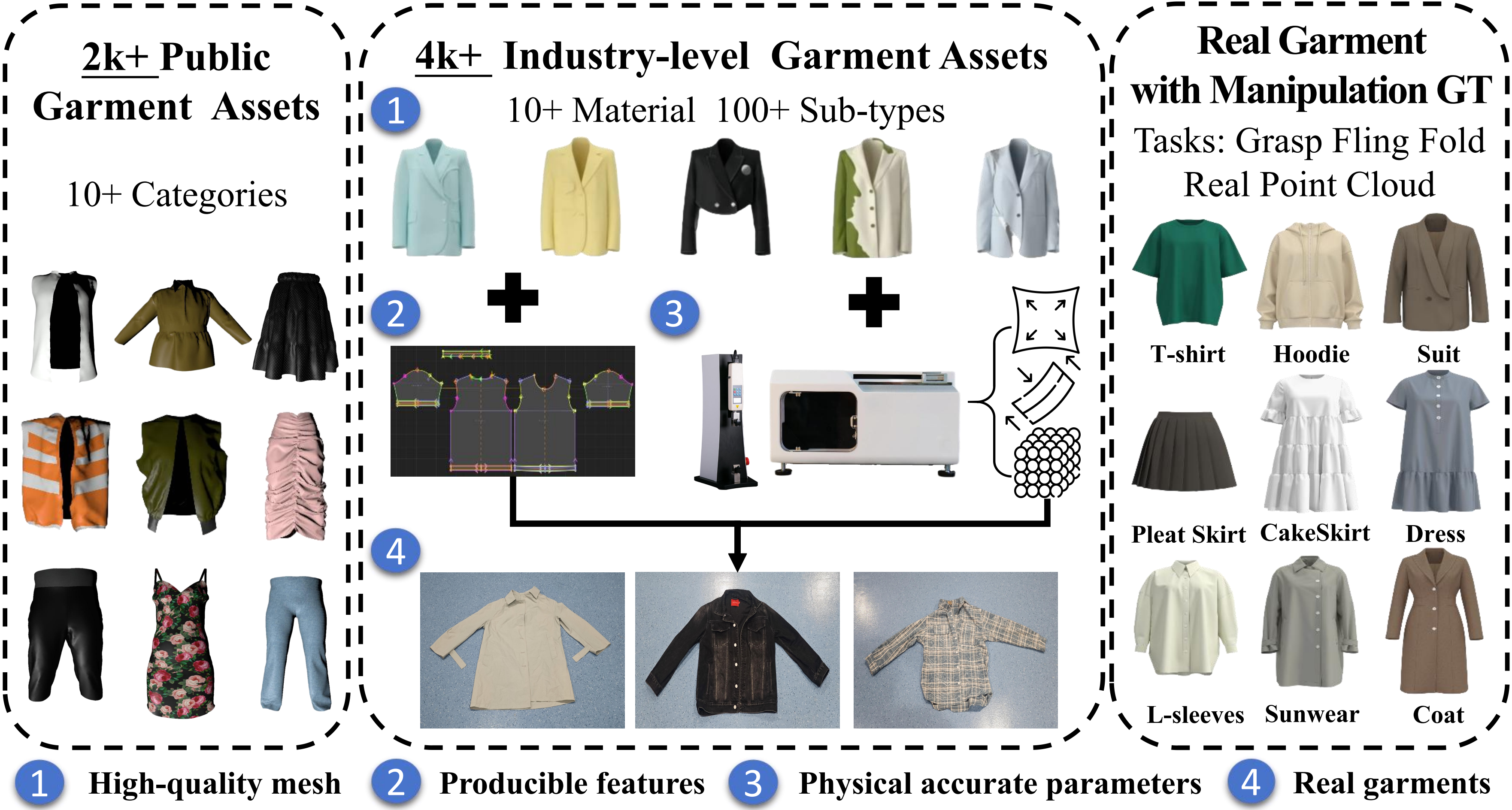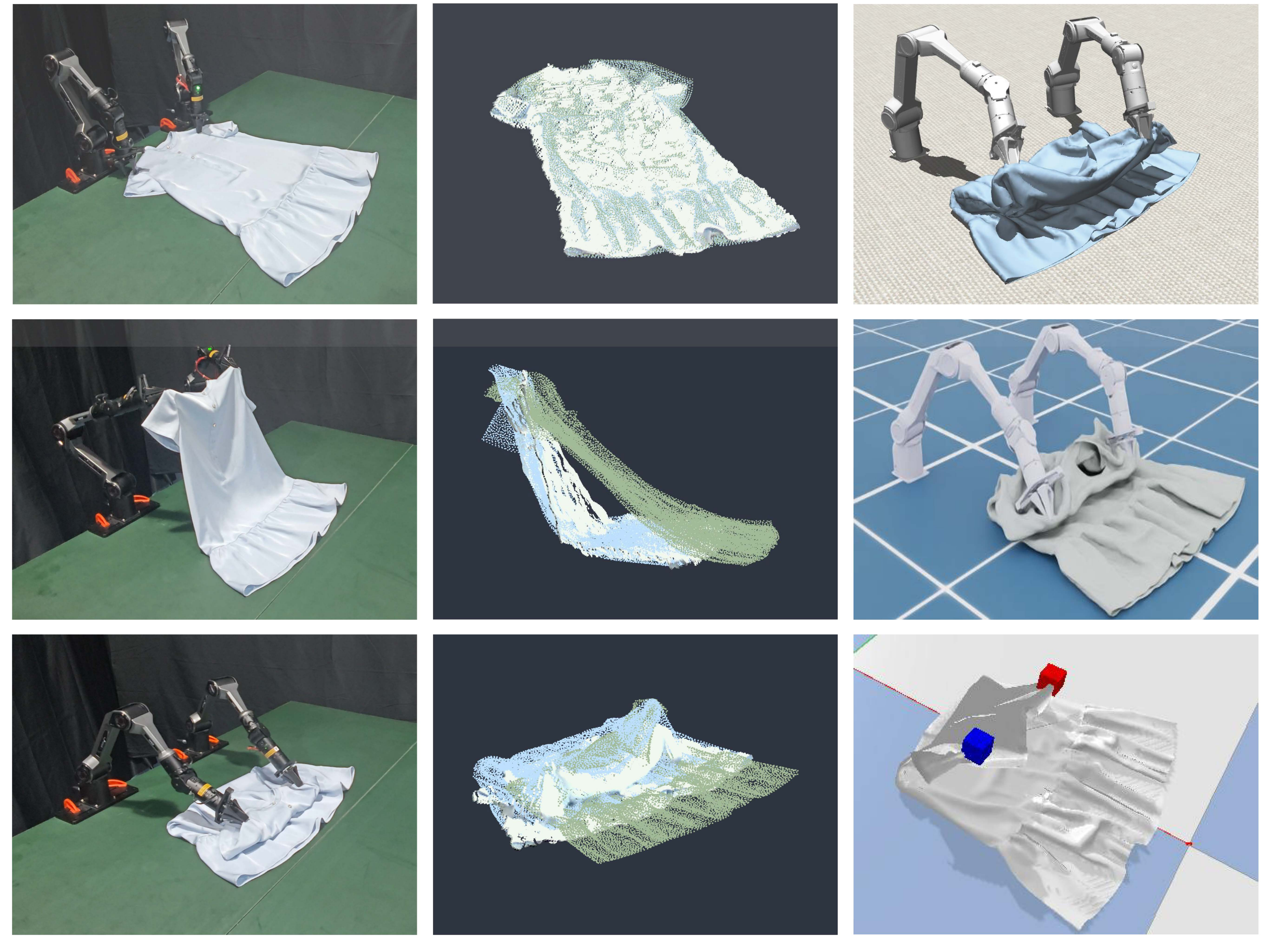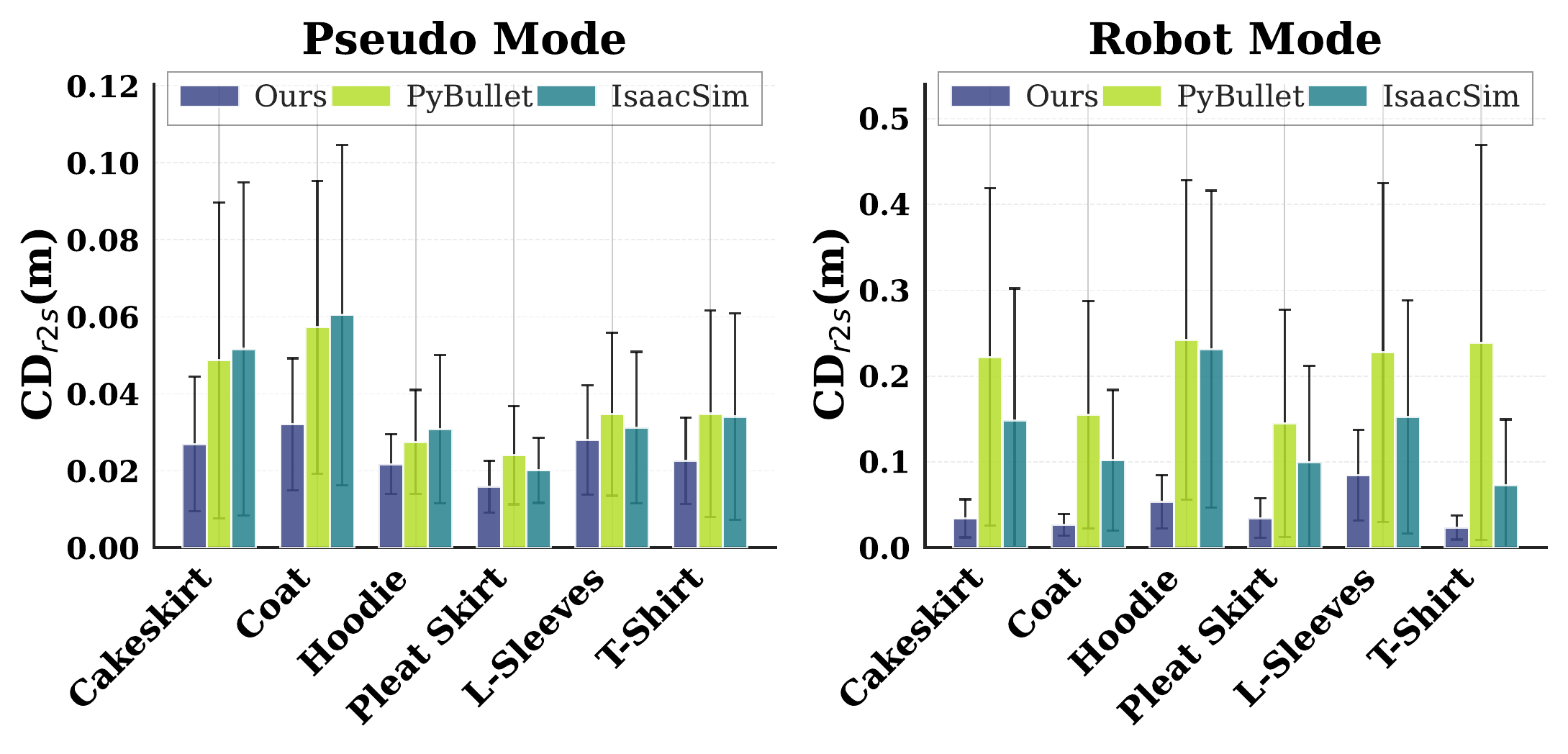While there has been significant progress to use simulated data to learn robotic manipulation of rigid objects, applying its success to deformable objects has been hindered by the lack of both deformable object models and realistic non-rigid body simulators. In this paper, we present Real Garment Benchmark(RGBench), a comprehensive benchmark for robotic manipulation of garments. It features a diverse set of over 6000 garment mesh models, a new high-performance simulator, and a comprehensive protocol to evaluate garment simulation quality with carefully measured real garment dynamics. Our experiments demonstrate that our simulator outperforms currently available cloth simulators by a large margin, reducing simulation error by 20% while maintaining a speed of 3 times faster. We will publicly release RGBench to accelerate future research in robotic garment manipulation.






